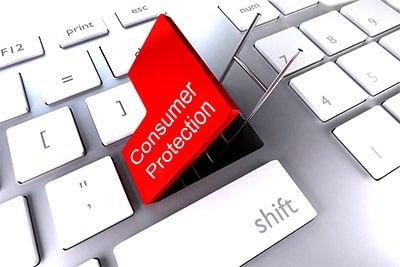Product Liability Regulations in Hong Kong
 25th March of every year is celebrated as International Consumers' Day, reflecting the recognition of consumer protection worldwide. In Hong Kong, the Consumer Council is regarded as the only statutory body representing the consumer interests by the Consumer Council Ordinance. The Hong Kong Consumer Council, established in 1974 to initially combat the serious problem of the soaring price of rice and other commodities caused by profiteering, has been advocating changes in consumer laws. The Consumer Council promotes the interests and well-being of consumers. However, the consumer protection laws are often criticized for being inadequate as the laws are not being updated to meet the wide range of products and services available in Hong Kong, as the government's philosophy is basically to promote self-help amongst the consumers.
25th March of every year is celebrated as International Consumers' Day, reflecting the recognition of consumer protection worldwide. In Hong Kong, the Consumer Council is regarded as the only statutory body representing the consumer interests by the Consumer Council Ordinance. The Hong Kong Consumer Council, established in 1974 to initially combat the serious problem of the soaring price of rice and other commodities caused by profiteering, has been advocating changes in consumer laws. The Consumer Council promotes the interests and well-being of consumers. However, the consumer protection laws are often criticized for being inadequate as the laws are not being updated to meet the wide range of products and services available in Hong Kong, as the government's philosophy is basically to promote self-help amongst the consumers.
It is well established that the consumption of goods and services is part and parcel of daily life, making consumer protection equally essential for every consumer. It is vital to know and understand Hong Kong's consumer protection system, mainly the functions and powers of the Consumer Council.
The Consumer Council must be given more powers for operating and dealing with consumer problems. The government should also focus its resources more on consumer protection. Raising public awareness by educating the public about their consumer rights must be the primary step. The Consumer Council must act independently to achieve its objectives on consumer protection. Thus, all consumers can be better protected under these improvements.
Differing from other common law jurisdictions, Hong Kong does not have a specific strict liability regime or any statutory regime specifically governing product liability.
Civil liability often arises under the tort of negligence, breach of contract, or statutory duty.
However, the criminal liability in Hong Kong for defective products is established by statutory provisions. For instance, Section 6 of the Consumer Goods Safety Ordinance provides that a person can only supply, manufacture, or import consumer goods into Hong Kong if the goods comply with the general safety requirement or the applicable approved standard for the particular consumer goods. The offense is punishable with a fine and/or imprisonment. A person found guilty under the provisions of the Consumer Goods Safety Ordinance is liable for a fine of HK$100,000, and imprisonment for one year upon the first conviction, and a fine of HK$500,000, and imprisonment for two years upon any subsequent conviction.
Apart from civil and criminal liability, the primary legislation governing safety requirements for consumer goods is the Consumer Goods Safety Ordinance, the Control of Exemption Clauses Ordinance, and the Sale of Goods Ordinance. Specific legislation applies to specific goods, including the:
- Toys and Children's Products Safety Ordinance;
- Pharmacy and Poisons Ordinance; and
- Dangerous Goods Ordinance.
How to establish product liability when the product is defective?
A product liability claim can be made under the general contract, tort law, breach of statutory duty, or breach of duty of care (Civil Liability).
For establishing product liability, the claimant must prove that:
- The manufacturer owed a duty of care.
- The manufacturer breached the duty of care.
- The claimant's injury was caused due to a breach of duty.
- A cause has sufficient proximity to the injury.
- The claimant has suffered actual damage resulting from the negligent act.
Under the law of negligence, the claimant must prove that he/she has suffered damage because the defendant breached the standard duty to exercise reasonable care to supply a safe and non-defective product.
The product can be defective due to the:
- manufacturing defect (not an intended part of the product);
- design defect (inherent in the design of the product);
- marketing or "failure to warn" defect when the company fails to provide proper warnings about possible safety risks concerning the use of the product.
 The injured party or parties can only recover by proving that the manufacturer was negligent or there is a breach of contract as there is no independent cause of action for product liability.
The injured party or parties can only recover by proving that the manufacturer was negligent or there is a breach of contract as there is no independent cause of action for product liability.
Under the Sale of Goods Ordinance, the contracting party, for instance, the retail supplier, is liable to the buyer for defective products, the manufacturer, the importer, and/or the distributor and/or parts suppliers also liable in tort.
Along with the defenses available under the contract law and tort law, the manufacturer or supplier can also avoid liability on establishing that:
- The manufacturer or supplier was not negligent, or the damage was not foreseeable, and even if all reasonable care was taken, the defect still could not have been prevented.
- The claimant was aware of the risks associated with the product at all material times and indeed chose to accept those risks.
- Contributory negligence or fault was on the part of the claimant.
- There was a supervening act that was the sole adequate cause of the damage.
If the manufacturer relies on the state-of-the-art defense to establish that it had exercised all reasonable care and precautions concerning the state of scientific and technical knowledge at the time of distribution, the claimant must prove that the fault or defect was discoverable.
Section 4(1)(a) of the Limitation Ordinance states that action in contract or tort must be brought within six years from the date on which the breach of contract/duty of care accrued. The time limit of the personal injury claim is three years under Section 27(4) of the Limitation Ordinance. As per Section 14(1) of the Employees' Compensation Ordinance, any action for employees' compensation or work-related injuries must be brought within two years from the date of the accident that caused the injury.
As per the Control of Exemption Clauses Ordinance, liability cannot be excluded in a contract for negligence that causes death or personal injury.
As per Section 15 and 16 of the Sale of Goods Ordinance, for a sale contract of goods by description, there is an implied condition that the goods will correspond with the description, and goods sold must be of merchantable quality. "Merchantable quality" includes requirements that the goods supplied are free from defects, including minor defects, and as safe and durable as reasonably expected concerning the description, price, and other relevant circumstances (Section 2(5) of the Sale of Goods Ordinance).
The Consumer Goods Safety Ordinance governs the safety requirements for consumer goods.
There is also specific legislation setting out safety requirements concerning certain goods, like Toys and Children's Products Safety Ordinance and Dangerous Goods Ordinance, along with several others.
Litigation for Product Liability
Product liability cases are brought in the District Court for cases involving claims over HKD 75,000 but not exceeding HKD 3 million. For a monetary value of more than HKD 3 million, the case will be heard in the Court of First Instance.
Except for defamation cases, all civil trials in Hong Kong are heard by a judge without a jury.
The claimant to commence the action in the District Court or the Court of First Instance, as the case may be, must issue and adequately serve a writ of summons or an originating summons to the defendant.
Burden of Proof
The burden of proof concerning the fault or defect and damage lies with the claimant. In a civil case, the claimant must prove a fact in issue on a "balance of probabilities." The claimant may invoke the doctrine of res ipsa loquitur, the doctrine that derives negligence from the nature of the injury due to having no direct evidence of fault/defect. The claimant must prove the injury:
- would not have occurred without negligence; or
- is caused by an agency or instrumentality within the defendant's exclusive control; or
- that caused the accident is not due to any voluntary action or contribution by the claimant; or
- of the claimant is not entirely explained by the defendant's non-negligent explanation.
When the court accepts the doctrine's applicability, the burden of proof shifts to the defendant to rebut the inference of negligence.
Appeal
The final decision of the Court of First Instance is appealed to the Court of Appeal. However, the following decisions cannot be appealed in civil cases unless leave to appeal has been granted:
- The decision of the District Court (Section 63(1) of the District Court Ordinance).
- The decision of the Court of First Instance in an interlocutory matter (Section 14AA of the High Court Ordinance).
- When the appeal against a decision of the Court of First Instance is solely on costs (Section 14(3)(e) of the High Court Ordinance).
The application for leave to appeal is first made to the judge of the court who gave the decision. On the judge's refusal to grant the leave, the party can then apply to the Court of Appeal for leave to appeal within 14 days from the date of the refusal.
 Conclusion
Conclusion
In Hong Kong, the law concerning product liability has grown incrementally despite increased calls for a comprehensive set of laws to regulate and govern consumer protection and product liability matters.
Product liability claims only grow with the new products being developed and launched into the market. Consumers around the world share information and give feedback about their product experiences. This is often done via social media, as information about product risks travels rapidly worldwide and is shared efficiently. The companies must take a new approach to manage their product risks and liabilities.
 English
English
 عربي
عربي Русский
Русский 官话
官话 português
português
 Türk
Türk 







